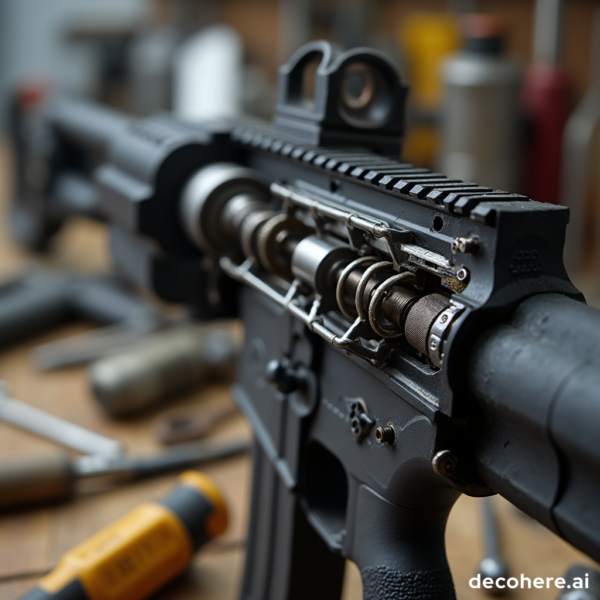How the Arts and Crafts Movement Empowered and Challenged Women Creators
Introduction: A Transformative Era for Women in the Arts
The Arts and Crafts Movement, which flourished from the late 19th to early 20th century, was more than just a design revolution. It was a cultural shift that changed how society valued handcraftsmanship, creativity, and the role of women in the creative economy. For women, this movement offered both unprecedented opportunities and persistent barriers. Understanding how women were affected requires examining their roles as creators, leaders, and innovators within a world that was still often dominated by traditional gender expectations.
Expanded Opportunities: New Pathways for Women Artists and Artisans
Before the Arts and Crafts Movement, women’s artistic contributions were often limited to the domestic sphere and underappreciated by mainstream art institutions. The movement’s emphasis on the value of handcrafted objects-such as embroidery, pottery, and decorative arts-elevated skills traditionally associated with women, placing them on par with painting and sculpture [1] . This change bestowed dignity on ‘applied arts’ and encouraged women to professionalize their talents.
Between 1890 and 1910, hundreds of organizations were founded by women for the benefit of women, focusing on ‘artistic craft’ or ‘home industries.’ In both Britain and America, women seized these new avenues to build careers outside the home, supported by a growing network of clubs and societies [1] . For example, the Society of Blue and White Needlework in Deerfield, Massachusetts, and Rookwood Pottery in Cincinnati, Ohio, became centers where women dominated as both leaders and practitioners [1] .
To access similar opportunities today, consider searching for local or national craft guilds, women’s art associations, or community art centers. Many maintain open calls for new members and offer training or networking events. Start by searching ‘women’s art organizations’ and ‘craft guilds’ in your region.
Breaking Barriers: Leadership and Innovation Amid Gender Bias
Despite the movement’s progressive ideals, women still faced significant discrimination. They were often excluded from powerful organizations-such as the Art Workers’ Guild in Britain, which did not admit women until 1964 [2] . In response, trailblazers like May Morris (daughter of William Morris) took matters into their own hands. May Morris managed the Morris & Co. embroidery department by age 23 and founded the Women’s Guild of Arts in 1907, providing critical support and professional networking for female artists [2] . Her legacy lives on in organizations dedicated to elevating women’s creative voices.
For women seeking to lead in the arts today, mentorship programs, women’s leadership workshops, and professional networks are invaluable. Search for ‘women in arts leadership programs’ or contact major museums and art schools for information about current initiatives.

Source: craftythinking.com
From Workshop to Social Change: Women’s Broader Impact
The Arts and Crafts Movement’s influence extended beyond the decorative arts. Many women intertwined their creative work with social reform. For example, Jane Addams, inspired by English social movements, founded Hull House in Chicago, which became a hub for art education and community improvement. In 1897, an Easter Art Exhibit at Hull House led to the founding of the Chicago Society of Arts and Crafts [3] . These efforts connected arts education to social causes, offering women new public roles as educators, organizers, and advocates.
To find or support similar programs today, look for community arts centers, nonprofit art collectives, and organizations like the National Endowment for the Arts. These groups often offer volunteer opportunities, workshops, and grant programs aimed at empowering women and underserved communities.

Source: widewalls.ch
Notable Women Creators: Case Studies and Legacies
The Arts and Crafts Movement produced a remarkable roster of women creators who shaped the future of design and art:
- May Morris : Renowned for her embroidery, May managed major design departments and fought for women’s inclusion in the arts [5] .
- Maria Longworth Nichols Storer : Founded Rookwood Pottery, providing employment and creative outlets for many women [3] .
- Clara Driscoll : Led the Women’s Glass Cutting Department at Tiffany Studios and designed iconic leaded glass lamps [5] .
To learn more about these pioneers, visit museum websites or search for exhibitions and lectures featuring women in the Arts and Crafts Movement. Many museums, such as the Art Institute of Chicago, highlight these figures in both permanent collections and special exhibitions.
Professionalization and Economic Independence
For women of means, the movement offered a way to transform artistic hobby into profession, whether by founding workshops, teaching, or selling decorative objects [3] . However, even as new doors opened, women’s work was often associated with the ‘feminine’-pottery decoration, needlework, basket making-rather than the more lucrative or prestigious crafts dominated by men [1] .
Today, many women artists and artisans continue to face similar challenges. To overcome them, it is advisable to join professional organizations, participate in juried exhibitions, and seek mentorship from established artists. You can also explore micro-grants and small business support programs through local arts councils or government agencies (search for ‘arts funding for women’ or ‘women artisan grants’).
Challenges and Limitations: Enduring Gender Stereotypes
Despite their achievements, women were often restricted to roles that mirrored the domestic sphere. Even in communities where women led, the crafts practiced were frequently those already deemed appropriate for women [1] . The movement did not erase the belief that a woman’s place was primarily in the home, and true equality was elusive.
If you encounter similar obstacles today, consider advocating for greater representation of women in all creative fields. Support diversity initiatives, participate in campaigns for equal pay in the arts, and share your experiences with local arts advocacy groups.
How to Access Opportunities Inspired by the Arts and Crafts Movement
If you are inspired by the legacy of women in the Arts and Crafts Movement, there are several actionable steps you can take:
- Search for women’s arts organizations, craft guilds, and professional networks in your area.
- Contact local museums, universities, or arts councils for information on grants, mentorship, and exhibition opportunities for women.
- Look for workshops and community classes focusing on traditional crafts such as embroidery, pottery, and weaving.
- Participate in advocacy by supporting or joining organizations that promote gender equity in the arts.
For those seeking funding or training, start by visiting the official websites of major museums, national arts endowments, or municipal arts programs. If you need help finding the right resources, try calling your local arts council or using search engines with terms like ‘women’s craft training programs’ or ‘arts grants for women.’
Conclusion: A Lasting Legacy
The Arts and Crafts Movement was a catalyst for change, giving women a platform to express themselves, gain economic independence, and push for social reform. While barriers remained, the movement’s spirit of creativity and collaboration continues to inspire. Whether you are an aspiring artist, educator, or advocate, there are more resources, organizations, and opportunities available today than ever before-many built on the foundation laid by the pioneering women of this historic movement.
References
- [1] University of Texas Ransom Center Magazine (2019). Women in the Arts and Crafts Movement.
- [2] The Collector (2024). Introduction to the Arts and Crafts Movement.
- [3] Colorado Arts and Crafts Society (2023). Women’s Roles and the Arts & Crafts Movement.
- [4] Arts & Crafts Tours (2020). The Women of the Arts and Crafts Movement.
- [5] Art Institute of Chicago. Women Designers of the Arts and Crafts Movement.



